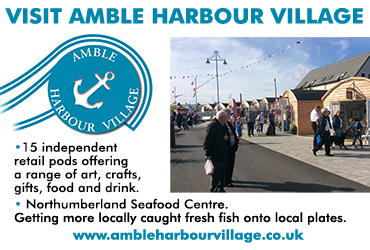Hugh’s views: Flowers and frogs
At the end of March, Morrisons wild flower meadow was cut back despite very difficult wet conditions. Since flowering last summer the area had been left to its own devices. The flowering plants including the grasses provided food for foraging house sparrows and goldfinches throughout the summer and attracted an array of insects including a common darter dragonfly which rested on the car park kerb.
The meadow must have sheltered other forms of life as during the winter and early spring a kestrel began visiting the site and other areas of the Coquet Industrial Estate. On one occasion I watched the kestrel as it perched on top of one of the street lights overhanging the meadow. It didn’t catch anything but at least it indicated the potential of the meadow.
 Since the meadow was mown some of the old vegetation has been removed which will help to reduce the fertility of the soil. This should in the long term reduce the vigour of the more robust plants so allowing others to flourish. If the meadow is allowed to complete another flowering cycle this year, then perhaps even grassland species such as meadow brown and small skipper butterflies which have been seen elsewhere around the estate might begin to colonise.
Since the meadow was mown some of the old vegetation has been removed which will help to reduce the fertility of the soil. This should in the long term reduce the vigour of the more robust plants so allowing others to flourish. If the meadow is allowed to complete another flowering cycle this year, then perhaps even grassland species such as meadow brown and small skipper butterflies which have been seen elsewhere around the estate might begin to colonise.
My thanks to everyone who contributed their observations on the subject of frogs. (See letters p6 for some of them.) Most related to frog sightings in private gardens and allotments and only one to frogs found in the countryside. Angela whose allotment is cultivated with biodiversity in mind highlights the danger of the over-use of slug pellets to birds, hedgehogs and frogs which may eat the poisoned molluscs. She also suggests that an award scheme be introduced for gardeners who encourage wildlife into their plots which would help to offset wildlife losses through development of other areas.
On 5 April a male brambling visited our garden. It almost went unnoticed in its muted winter plumage as it closely resembles the more common chaffinch. They migrate here for the winter from the birch woods of northern Europe then return there to nest and rear their young in the spring. This was only the second ever seen in our garden the first being last October while still in its vivid breeding plumage. Seeing two bramblings in a small garden was quite a surprise. You just never know what might turn up at a bird feeder.
Hugh Tindall












